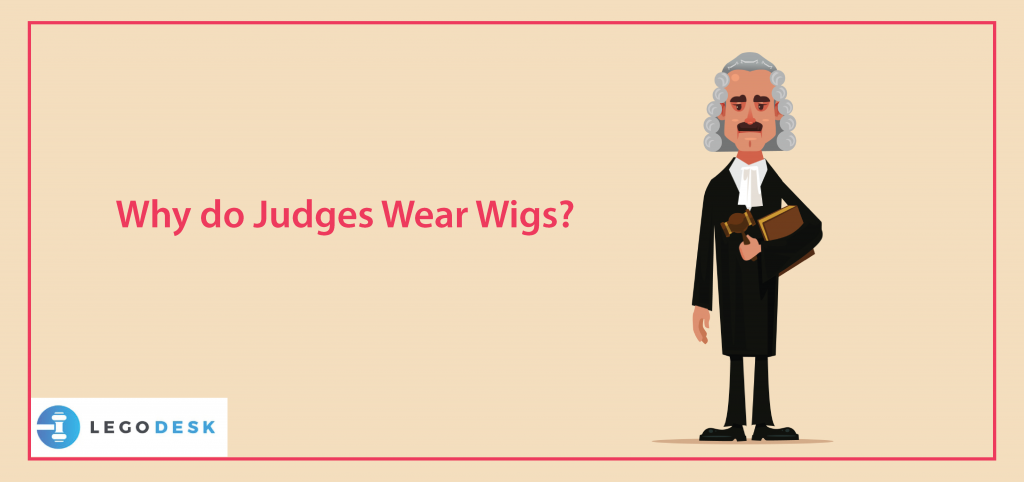Reasons Why do Judges Wear Wigs?

In the legal industry, appearances matter. One’s dressing sense attracts respect for ourselves and also helps to inspire trust and to convey a polished, professional image. The dress code in any profession is a sine qua non. Dress code plays a really important role in a profession like law. They represent responsibility. Wigs have a huge significance in the history of the evolution of the formal dress code for the law. They represent several values that are required in the courtroom.
Read Also – Why do lawyers wear wigs?
History of Wigs in Court
The legal system in India is largely derived from the judicial structure of courts in Britain. In Britain, it was customary for lawyers and judges to wear black gowns, white neckbands, and grey wigs. This tradition can be traced back to a few centuries ago in the UK.
Read Also: Why do Lawyers Wear Black Coat?
The system of court dress was firstly established by Kind Edward III (1327-1277). Earlier, that is prior to the 17th century, the judges and lawyers were only required to keep their as clean and as short as possible. Several portraits of the 1680s show the judges sitting without any wigs. The main credit for the introduction of wigs in the courtroom is generally given to Charles II (1660-1685). However, it is no doubt that Louis XIV of France (1643-1715) has the biggest impact on the trend of wigs in the courtroom. In fact, by the 1760s wigs largely became a part of the formal dress of lawyers as well as judges.
Read Also: All About Retirement Age of Judges in India
‘The Discourse on Robes and Apparel,’ an academic paper of 1625, led to the adoption of the robe and wig in the courtrooms and changed the way officials dressed. The main reason cited for this adoption was to distinguish judges and barristers from other members of society. Earlier the judges used to wear wigs made from horsehair. Full-length wigs of judges were generally costly enough even when horsehair was not a rare resource.
Read Also: How Judges of Indian Court are appointed?
Why Do Judges Wear Wigs?
-
REPRESENTING UNIFORMITY
A judge needs to treat every person in his court uniformly without any bias. The wig of a judge creates a separate identity for him and presents him as a third person in order to create a symbol of non-bias. Thus, one of the main purposes for the introduction of wigs in the court was to introduce the element of uniformity in the law.
-
SYMBOLISM
Dress codes in any profession have a symbolic meaning and represent something which is the motive of the profession. Likewise, wigs have a symbolic meaning in the legal field. They represent the elite nature of the profession. They were a fashion statement in the late 17th century and the early 18th century. Wigs symbolize sophistication and a pre-existing custom.
-
ANONYMITY
Another reason for wearing wigs is to maintain anonymity in practice. The appearance of the judges and their personal life should not affect the case of a person. Judges need to act anonymously while adjudging in the court. The only factors to be taken into consideration should be the facts of the lawyers and with cases. Thus, wearing wigs enhances the anonymous behavior of judges in the court with the clients so that the personal life of a judge does not affect the case. Thus, wigs represent a judge as a third person who acts as an unbiased, reasonable person and makes a rational decision.
-
DISTINCTION
Dress codes generally help in distinguishing people of various occupations. Similarly, in the legal profession dress code plays an important role. The wigs help in distinguishing judges from other normal persons and creates a separate identity for them. Therefore another factor to consider when debating the validity of wigs as a part of lawyers’ attire is the added connotation of distinctness. Wigs, along with the entire costume of lawyers, make look distinct and separate from the rest of the people.
Read Also – What is the Lady Lawyers Dress Code?
Conclusion
Several campaigns have been launched in order to get the judges and lawyers, rid of the wigs during court proceedings. The first effort for the abolition of wigs was made by Sir Robert Collier in 1868. However, all such reforms, whether historical or modern, failed. Wigs are still worn during criminal trials; however, some people want it to be removed. There has been no successful attempt to date, and this tradition continues to prevail. However, this custom is not prevalent in India as of today.
Read Also – How to Impress a Judge in Court
Try our Debt Resolution solutions today Request a Demo